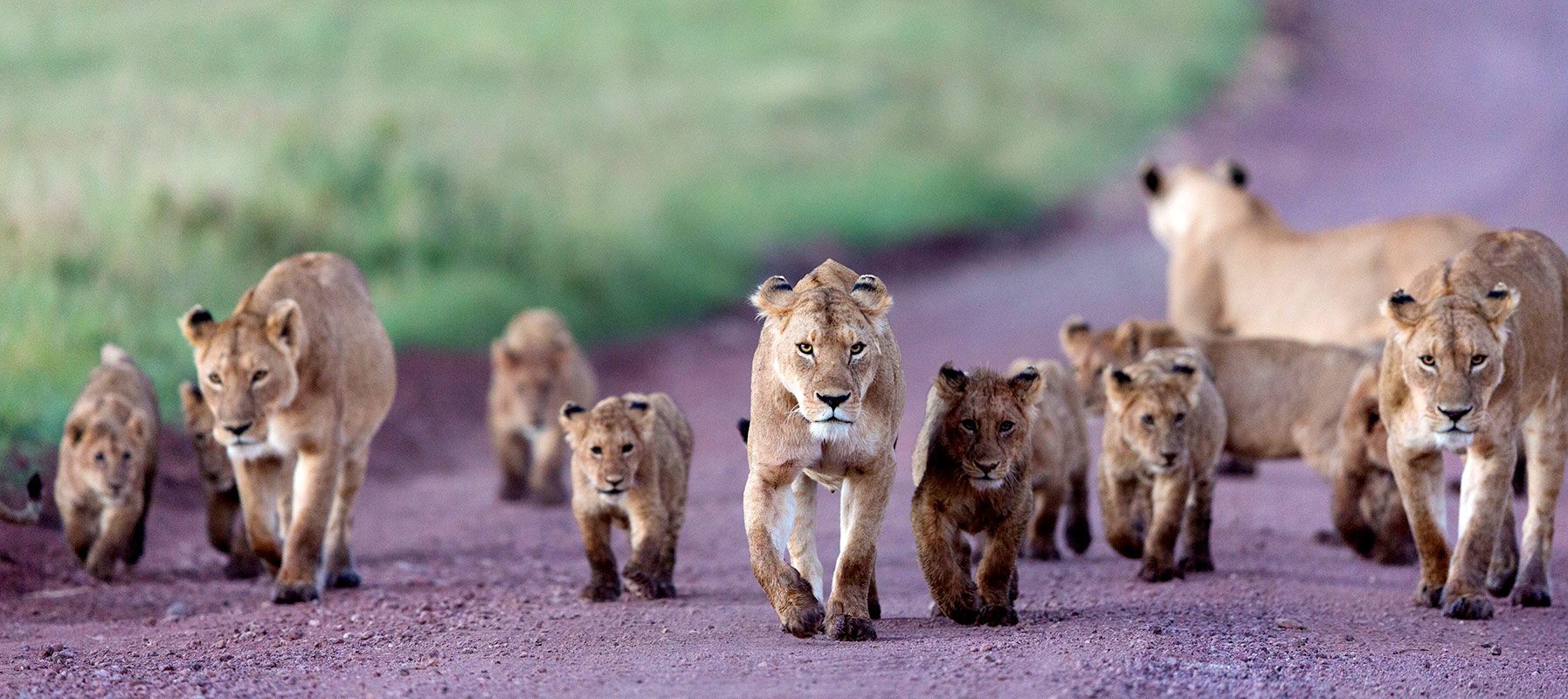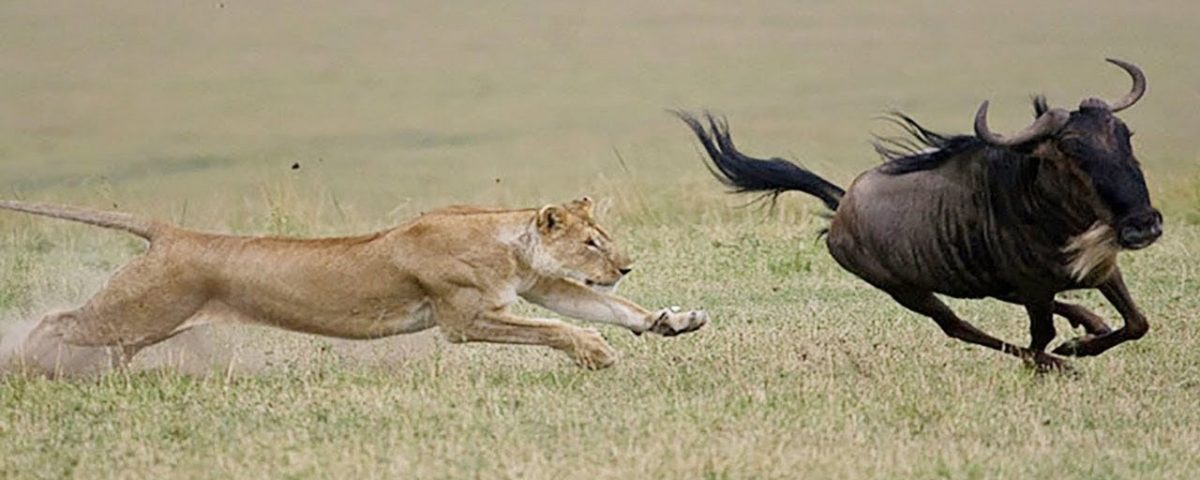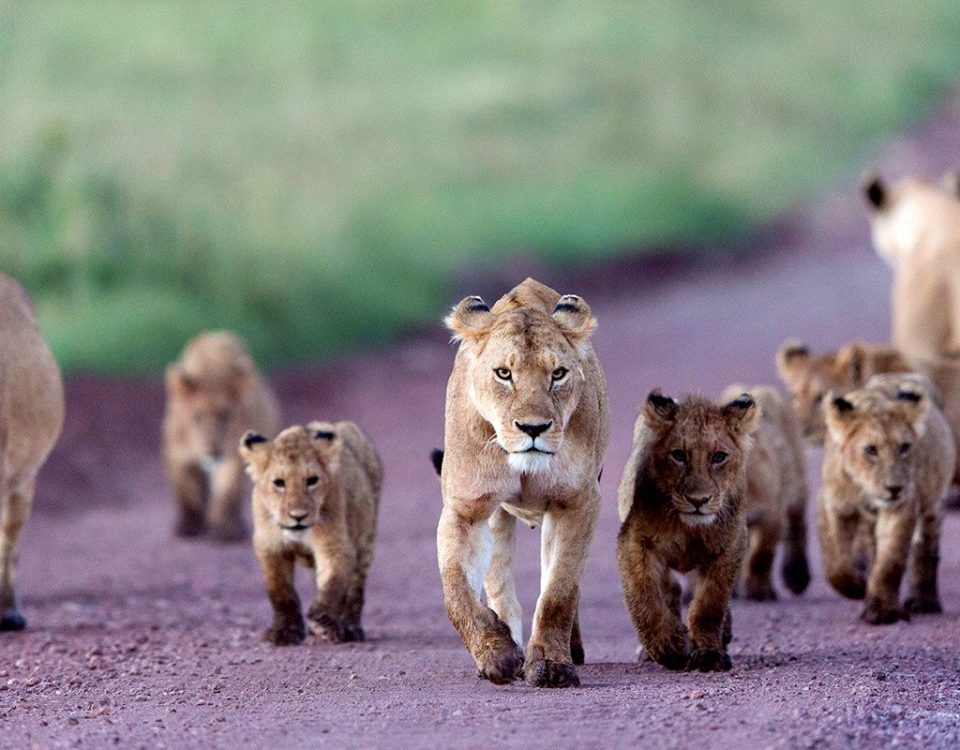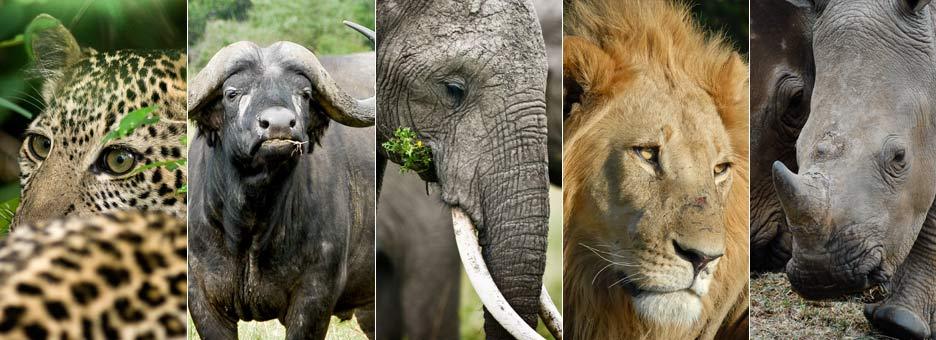
What Animals Will I See on Safari in Tanzania Destinations?
November 29, 2018
What is the Great Migration?
The Great Migration is the name for the movement of over 1.5 million wildebeest and hundreds of thousands of zebra and gazelle during the dry season on the East African savanna. The herds move around 2,000 kilometres from the southern expanse of the Serengeti plains and Ngorongoro Crater over the borders of Kenya to Maasai Mara National Reserve and back down to the southern Serengeti again in search of food and water.
However, while named the Great Migration, this movement of animals is not a simple trip from point A to B. No migration ever is. Instead of a simple back and forth movement between Tanzania and Kenya, the Great Migration is a clockwise cycle of movement that wildebeest undergo every year in order to find food and water and rear their young during seasonal change.
When is the Best Time to See The Great Migration?
It’s dawn in Northern Tanzania. The sun is trying to peel itself up from the horizon and you are standing in your safari Land Cruiser, eyes fixed on a sweeping yellow-orange landscape just as little dots begin to pepper the savannah. The day warms, you get closer, and those dots become animals, wildebeests, several hundred thousand of them.
Your heart beats faster as the day gets hotter and the herds get larger, rougher, faster. This unified mass of shaggy, four-legged creatures moves like some enormous shadow across the landscape and you are stuck in awe at the sight of it all. You’ve never seen anything close to this before. The Great Migration.
Each year an estimated 1.5 million blue wildebeest a name derived from the Afrikaans “wild beast” begin their clockwise movement en masse in and around the Serengeti National Park and Masaai Mara National Reserve, in search of fresh grass and water. Now before identifying the optimal time for you to experience this Natural Wonder of the World, it’s helpful to first understand the wildebeest’s cycle of life and death
January-February
The story begins after the November rains subside and fresh, new grasses emerge. Wildebeests move into the Serengeti plains to the south and the calving begins. Half a million offspring are born in this short timeframe; they literally hit the ground running within the first two minutes of life. Why? Because jackals, hyenas, and other predators know this is calving season. Easy prey.
Central Serengeti (March-April)
The herds are on the move at this point, into the central part of the Serengeti plains. The wildebeest herds swell in size as they follow grassy nutrients, and this takes them west and north towards Kenya and the Maasai Mara National Reserve.
Westward Movement (May-June)
This is when things get interesting. Upwards of 1.5 million wildebeest—not including a quarter million zebras and gazelles—make their way north. Imagine if every single resident of Manhattan decided to walk north. By May they drift into the western corridor, and in June, you can witness crocodile-choked crossings of the Grumeti River, the kind of drama when over a million ungulates try to cross a river.
Northern Spreading (July-August)
From here we being to experience a diffused populations arrive into northern territory, some through the heart of Serengeti and Masai Mara. The Mara River affords one of the best photography opportunities for mass crossings.
Circle Begins (October-November)
By October the rains return to the Serengeti, recharging water holes and starting the cycle of grass regeneration. As the migration returns south, many wildebeests are already carrying the next generation in their bellies, and with that, the circle is complete. Life and death forge onwards.





